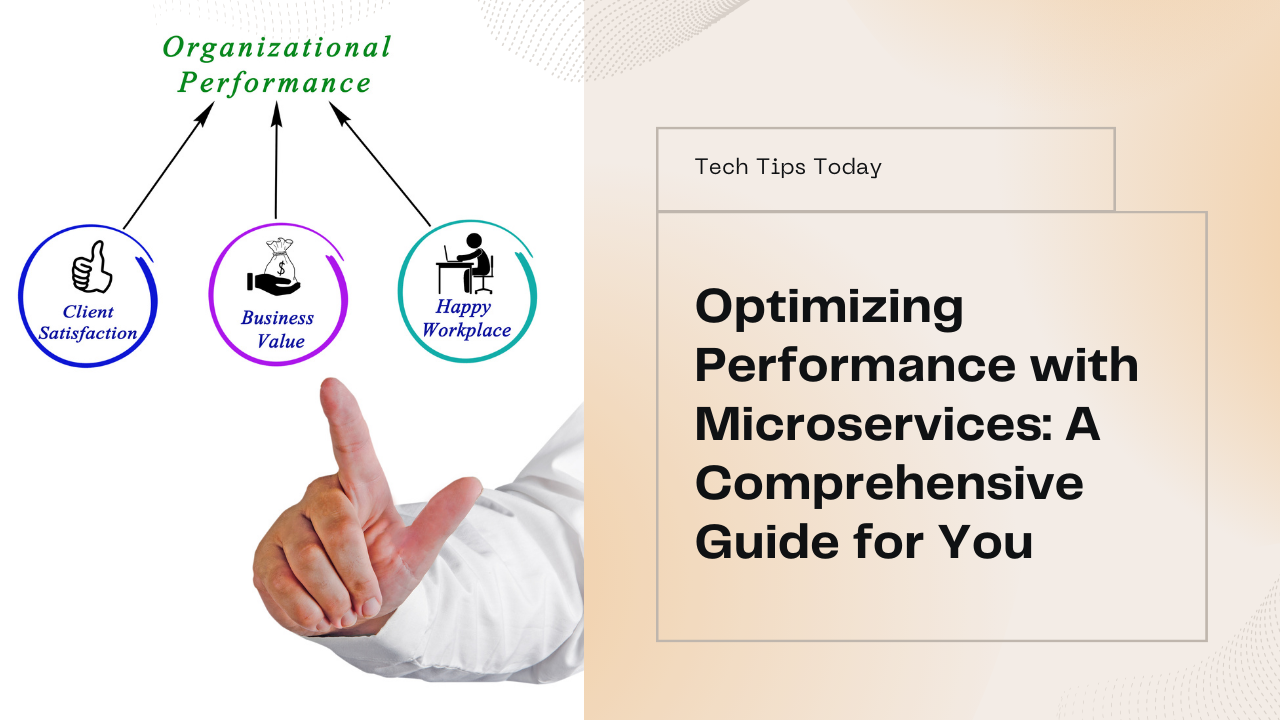In today’s fast-paced digital landscape, delivering high-performance, scalable, and maintainable applications is crucial for businesses. Traditional monolithic architectures often struggle to meet these demands, leading to the rise of microservices architecture. Microservices offer a way to decompose applications into smaller, manageable services that can be developed, deployed, and scaled independently. This blog will delve into how to use microservices for better performance, exploring their benefits, best practices, and real-world examples.
What Are Microservices?
Microservices are a software development technique—a variant of the service-oriented architecture (SOA) structural style—that arranges an application as a collection of loosely coupled services. Each service in a microservice architecture focuses on a specific business capability and is developed, deployed, and maintained independently.
Key Characteristics of Microservices:
- Independence: Services are independent, allowing teams to develop, deploy, and scale them without affecting other services.
- Decentralization: Each service can use its own database and technology stack, promoting technological diversity and autonomy.
- Resilience: Failure in one service does not impact the entire system, improving overall system reliability.
- Scalability: Services can be scaled independently based on demand, optimizing resource usage and performance.
Benefits of Microservices for Performance
- Improved Scalability: Microservices allow individual components to be scaled independently. For example, if a specific service experiences high load, only that service can be scaled up, rather than the entire application.
- Faster Development and Deployment: Independent services enable parallel development and continuous delivery, reducing time-to-market.
- Enhanced Fault Isolation: Faults in one microservice do not propagate to others, making the system more robust and easier to maintain.
- Optimized Resource Utilization: Each service can be allocated resources based on its specific needs, leading to more efficient use of hardware and cloud resources.
- Better Performance Optimization: Developers can fine-tune performance for individual services without impacting the entire application.
Best Practices for Implementing Microservices
1. Design Services Around Business Capabilities
Each microservice should correspond to a specific business capability or domain. This alignment ensures that teams can focus on delivering value specific to their domain, improving efficiency and clarity.
2. Use APIs for Communication
Microservices should communicate with each other through well-defined APIs. RESTful APIs and gRPC are popular choices. This approach ensures loose coupling between services, making it easier to update and scale individual components.
3. Implement Service Discovery
In a microservices architecture, services need to find each other dynamically. Implementing service discovery mechanisms (e.g., using tools like Consul or Eureka) helps manage this complexity by providing a registry of available services and their instances.
4. Ensure Data Consistency
Data consistency is a challenge in distributed systems. Use patterns like Event Sourcing and CQRS (Command Query Responsibility Segregation) to manage consistency across services. These patterns help maintain a clear separation between read and write operations, improving performance and scalability.
5. Implement Circuit Breakers
Circuit breakers prevent a service from repeatedly trying to execute an operation that is likely to fail. Tools like Netflix Hystrix can help implement this pattern, enhancing the resilience of your microservices architecture.
6. Automate Testing and Deployment
Automation is crucial for the success of microservices. Implement continuous integration and continuous deployment (CI/CD) pipelines to automate testing and deployment processes. This practice reduces manual errors and accelerates delivery.
7. Monitor and Log Extensively
Monitoring and logging are essential to understand the performance of individual services and the system as a whole. Use tools like Prometheus, Grafana, and ELK (Elasticsearch, Logstash, Kibana) stack to collect, visualize, and analyze metrics and logs.
8. Secure Your Microservices
Security is paramount in microservices architecture. Implement authentication and authorization mechanisms, such as OAuth2 and JWT (JSON Web Tokens). Ensure secure communication between services using protocols like HTTPS.
Real-World Examples of Microservices
1. Netflix
Netflix is a pioneer in adopting microservices. They transitioned from a monolithic architecture to microservices to handle their massive scale and improve performance. Each function of the Netflix application, such as user recommendations, streaming, and billing, is handled by separate microservices. This decomposition allows Netflix to scale efficiently and handle millions of concurrent users.
2. Amazon
Amazon’s journey to microservices began with the need to scale their e-commerce platform. They decomposed their monolithic application into microservices, enabling independent development and deployment of services like payment processing, order management, and inventory management. This architecture has helped Amazon handle peak loads during events like Black Friday sales.
3. Uber
Uber’s rapid growth required a scalable and flexible architecture. They adopted microservices to support their complex business logic, including ride matching, pricing, payments, and notifications. Microservices allowed Uber to scale individual components independently and innovate quickly.
Challenges of Microservices and How to Overcome Them
1. Complexity in Management
Managing a large number of microservices can be challenging. Use orchestration tools like Kubernetes to automate deployment, scaling, and management of containerized applications.
2. Network Latency
Inter-service communication can introduce latency. Minimize this by using efficient communication protocols (e.g., gRPC) and optimizing service design to reduce the number of inter-service calls.
3. Data Management
Ensuring data consistency across microservices is complex. Implement strategies like eventual consistency and use distributed data management patterns to mitigate this issue.
4. Testing Difficulties
Testing microservices can be more complex than monolithic applications. Use unit tests, integration tests, and end-to-end tests to ensure comprehensive coverage. Employ test automation tools to streamline this process.
Conclusion
Microservices architecture offers a powerful approach to building high-performance, scalable, and maintainable applications. By decomposing applications into independent services, businesses can achieve greater agility, fault isolation, and optimized resource utilization. However, implementing microservices requires careful planning, adherence to best practices, and the right set of tools to manage the inherent complexity.
At Sodio Technologies, we specialize in designing and implementing microservices architectures tailored to your business needs. Our expertise ensures that you can leverage the full potential of microservices to enhance performance, scalability, and maintainability. Contact us today to learn how we can help you transition to a microservices architecture and unlock new levels of efficiency and performance.
By embracing microservices, businesses can stay competitive in the ever-evolving digital landscape, delivering high-quality applications that meet the demands of modern users. Implementing the right strategies and tools will pave the way for a successful microservices journey, driving innovation and growth for years to come.
4o







